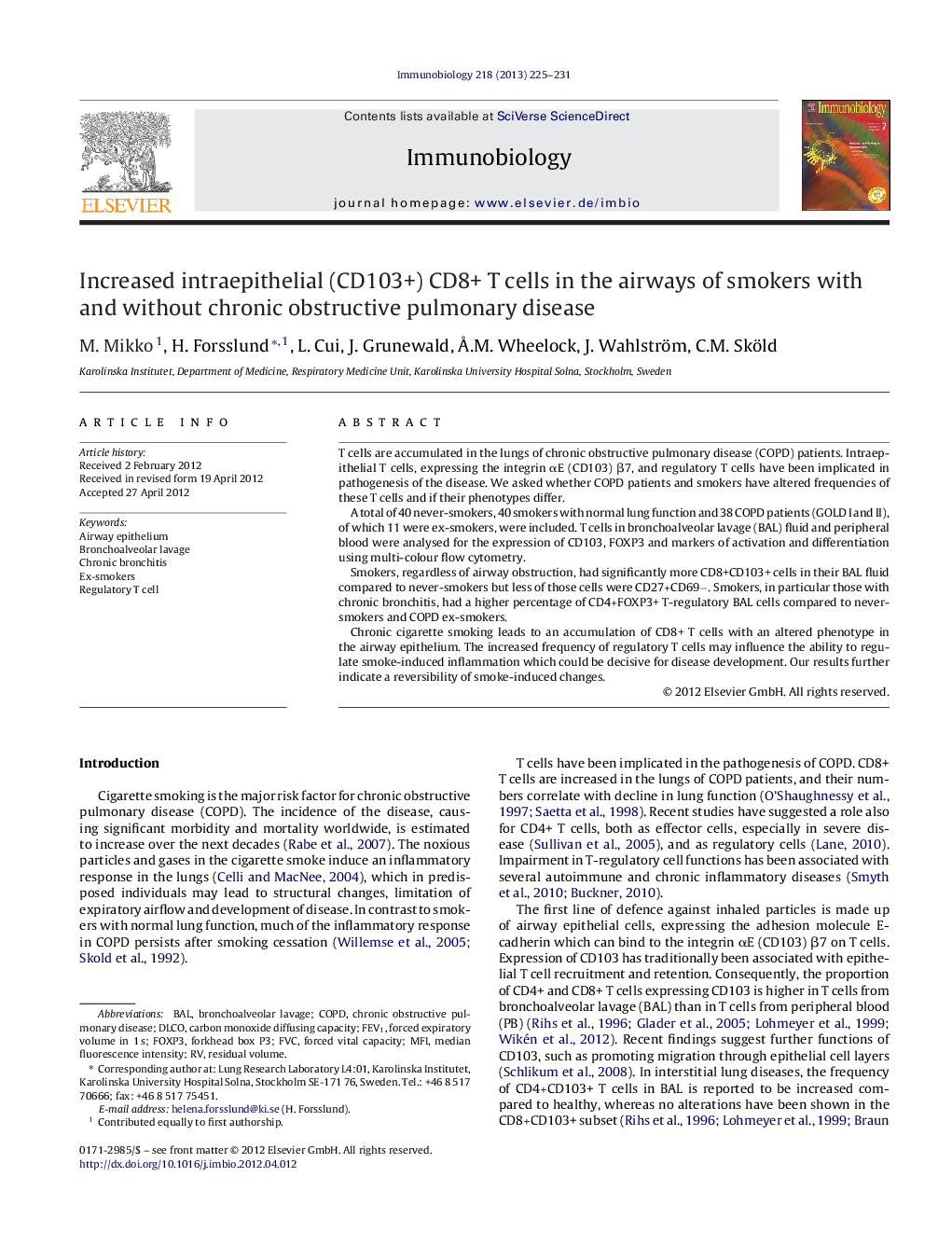| Article ID | Journal | Published Year | Pages | File Type |
|---|---|---|---|---|
| 2183221 | Immunobiology | 2013 | 7 Pages |
T cells are accumulated in the lungs of chronic obstructive pulmonary disease (COPD) patients. Intraepithelial T cells, expressing the integrin αE (CD103) β7, and regulatory T cells have been implicated in pathogenesis of the disease. We asked whether COPD patients and smokers have altered frequencies of these T cells and if their phenotypes differ.A total of 40 never-smokers, 40 smokers with normal lung function and 38 COPD patients (GOLD I and II), of which 11 were ex-smokers, were included. T cells in bronchoalveolar lavage (BAL) fluid and peripheral blood were analysed for the expression of CD103, FOXP3 and markers of activation and differentiation using multi-colour flow cytometry.Smokers, regardless of airway obstruction, had significantly more CD8+CD103+ cells in their BAL fluid compared to never-smokers but less of those cells were CD27+CD69−. Smokers, in particular those with chronic bronchitis, had a higher percentage of CD4+FOXP3+ T-regulatory BAL cells compared to never-smokers and COPD ex-smokers.Chronic cigarette smoking leads to an accumulation of CD8+ T cells with an altered phenotype in the airway epithelium. The increased frequency of regulatory T cells may influence the ability to regulate smoke-induced inflammation which could be decisive for disease development. Our results further indicate a reversibility of smoke-induced changes.
